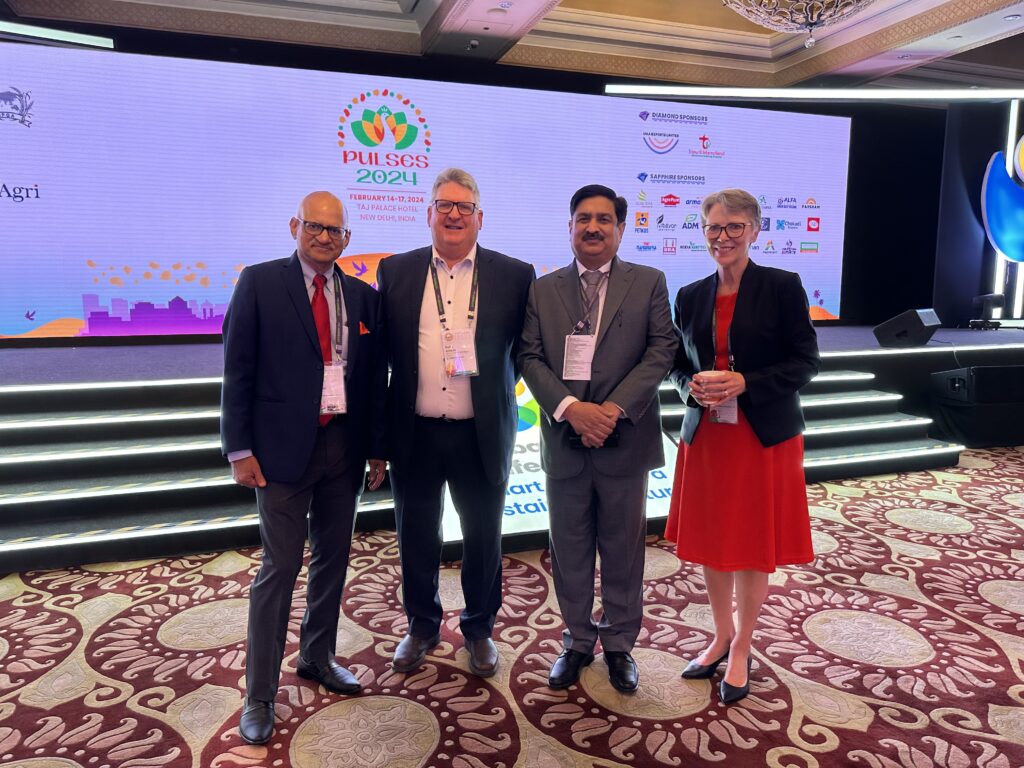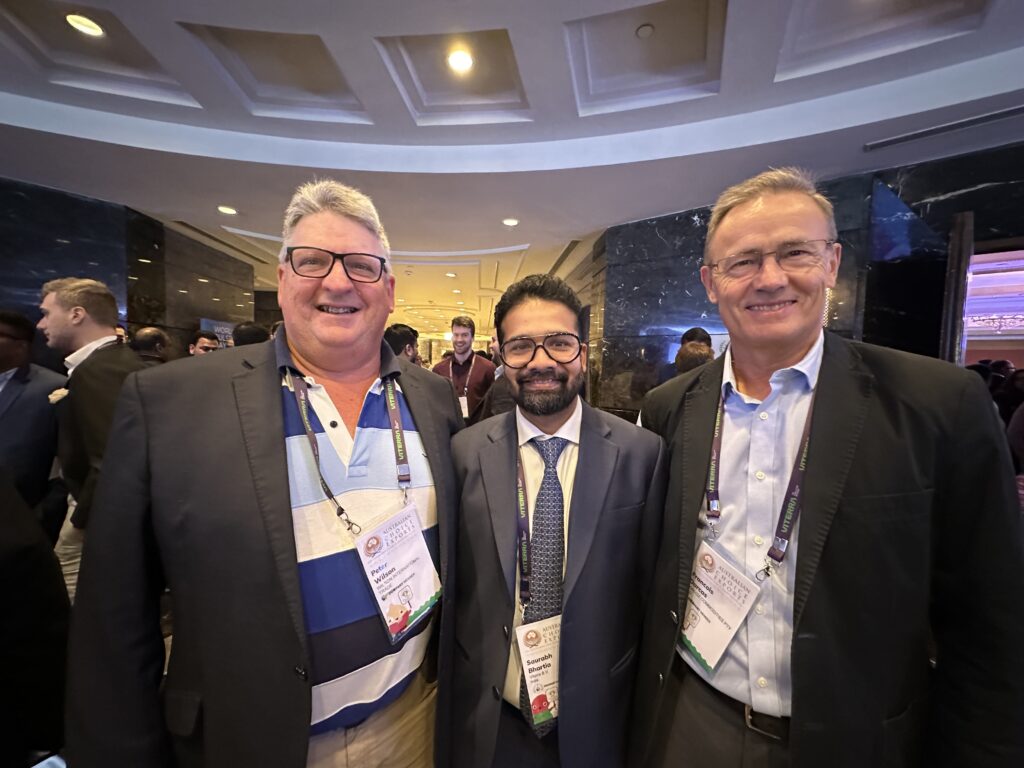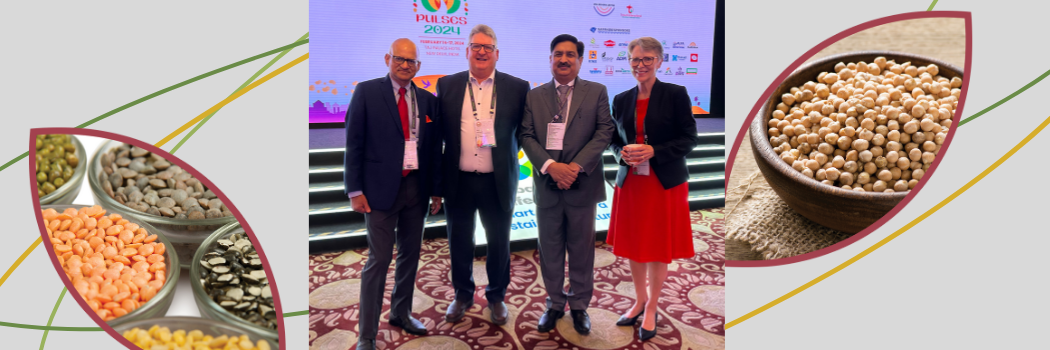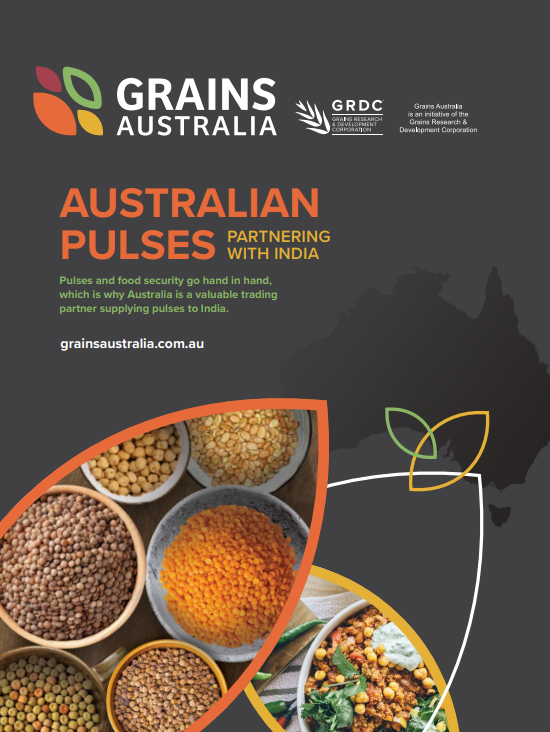Grains Australia was represented in New Delhi on February 14-17 at Pulses 2024, the annual conference of the Global Pulse Confederation (GPC). It’s an absolute festival of people talking pulses, with hundreds of members of the international pulse trade from every importing and exporting country meeting to discuss industry developments and market outlooks, as well as doing business.
This conference rotates through many countries (Sydney in 2023, next year Singapore), so the fact that this year India was the host was excellent timing, given Australia’s record lentil crops and exports to India in recent years. Lentils are an Australian success story and this looks set to continue, although the bigger topic for discussion in India was its shortfall in chickpea production.
Chickpeas are a vastly important part of India’s protein needs and its single-largest pulse crop. India’s harvest (just starting) is likely to produce 10-11 million tonnes (estimates vary), although this will actually be the smallest crop for some years (down perhaps 10-15 per cent on 2023) and will force consumers onto other protein sources.

Pulse Council member Will Alexander and Pulse Council Chair Peter Wilson at Pulses 2024.
The market opportunity?
Grains Australia’s Pulse Council Chair, Peter Wilson, said India knows its needs and is already importing large quantities of red lentils and yellow peas to meet protein demand.
“The issue is what happens later this year as India consumes pulse supplies from its current harvest and is looking for more,” Mr Wilson said.
“India would normally export chickpeas to Bangladesh and the United Arab Emirates, but higher domestic pricing is now working to hold supplies within India and minimise any exports.
“Australia’s largest chickpea markets are already Pakistan and Bangladesh, with the UAE third.
“Clearly there will be scope for us to supply more into Bangladesh and the UAE, with additional demand also likely from Pakistan, so these opportunities for Australian chickpeas look positive.”
Could/would India alter its import protocols to allow chickpea imports from Australia? Possibly, according to Mr Wilson, with this subject part of ongoing discussions.
“People were speculating at the conference on whether India might seek Australian chickpeas and it is something we are keen to work with India on,” Mr Wilson said.
“Our message is that Australian growers are ready to increase production if demand improves – we see this as an opportunity for Australia to help secure improved protein supplies for India, enhancing our industry’s partnership with India’s people.”

GPC Board President Vijay Iyengar, Peter Wilson, National Agricultural Cooperative Marketing Federation of India Vice Chair Dr Sunil Kumar Singh and previous GPC President Cindy Brown.
Grains Australia’s approach
The GPC conference being in India offered many chances to talk with Indian government officials and industry representatives. Australia and India have more than 40 years of agricultural cooperation, supporting the growth and prosperity of India’s agriculture sector. The Australian pulse industry’s relationship with India goes back decades, growing pulses for India’s tastes.
Leading into the conference Grains Australia worked with officials from the Australian Trade and Investment Commission and Department of Agriculture, Fisheries and Forestry to prepare a brochure showcasing the pulses Australia grows that are of interest for Indian diets, along with explaining the seasonal production cycle and lead times. India knows its demand for Australian lentils has encouraged production, so the brochure referenced both the scope and willingness to similarly increase chickpea production.
The strong link between India and Australia and the importance of grains are recognised at government level under the 2020 India-Australia Comprehensive Strategic Partnership. The economic relationship has elevated through the Australia-India Economic Cooperation and Trade Agreement that came into force in 2022. Within these frameworks, the Australian grain industry is working with government in the development of a formal Australia-India Grains Partnership, to deepen engagement. Under this partnership Australia is already exchanging knowledge on grains storage and supply chain management for Indian growers.
Australia and GPC
Why is GPC so important? It’s because good relationships are a big part of the international pulse trade and part of fostering those relationships is being involved with organisations that help bring industry coordination, development and structure.
GPC is the trade association for the global pulses industry, based in Dubai. Many Australian industry people have been involved with GPC since its inception. Francois Darcas (former Deputy Chair of Pulse Australia) and Peter Wilson both currently represent Australia on the GPC Board.

Peter Wilson, Saurabh Bhartia (Viterra India) and Francois Darcas (Agri-Oz exports and GPC Board).
March 5, 2024

